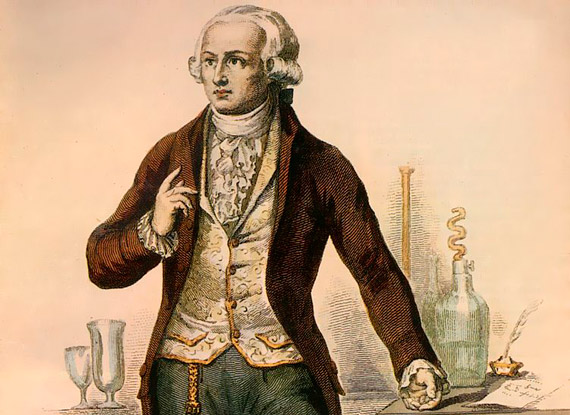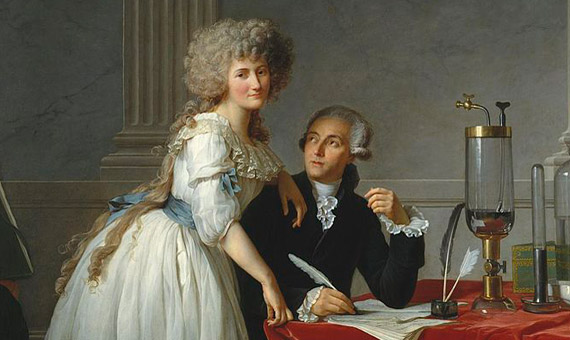During its first hundred years, chemistry had many tumbles. Some chemists emerged with the mentality of alchemists, such as the one who discovered phosphorous by chance while searching for gold in urine. Like in the middle ages, they still spoke about oil of vitriol instead of sulphuric acid and resorted to an imaginary substance, phlogiston, to plug the holes of some theories that had not changed since ancient Greece. Antoine de Lavoisier managed to liberate chemistry from that dead-end street, but despite being a revolutionary scientist, he died in 1794 under the guillotine in the French Revolution after falling in with the wrong group. Born to a rich Parisian family, he inherited a fortune at age 25, shortly after being admitted to the Academy of Sciences, and decided to invest in a private company that collected taxes for the state and treated the poor mercilessly.

That same business that would eventually lead him to the guillotine allowed him to set up the best private laboratory of the time with no expense spared. He was obsessed with measuring and weighing everything precisely. This way he overthrew the belief in the old theory of the four elements (air, water, earth and fire), according to which water could be transmuted into earth. After boiling water for a long time a solid residue appeared at the bottom of the container, so how dare one doubt the evidence? Lavoisier did just that and with his precise experiments he showed that the glass vessel lost a weight equal to the sediment that appeared.
He continued to prosper by marrying the daughter of a director of his company. They made very good partners in the lab: she took notes of his experiments, drew the illustrations and translated his scientific articles into English. Together they addressed the hot topics of eighteenth-century chemistry: Why do some things burn and lose weight when heated, while others –the metals– become covered with rust and gain weight? Lavoisier suspected that what the metals gained the air lost, and he followed the tracks left by other chemists. He lost his way several times and he was mistaken about many things, until the Englishman Priestley told him about a new kind of air that made things burn better, or rust sooner, and that mice sealed in a container of this air survived twice as long and were especially active. Lavoisier repeated Priestley’s experiments and appropriated the discovery of this new element that was part of the air, which he called oxygen (“generator of acid” in Greek), mistakenly believing that it was present in all acids.

From error to error, he reached a final success. In his Elementary Treatise on Chemistry (1789), published in the year of the French Revolution, he explained that combustion, the oxidation of metals and the respiration of animals are actually the same type of processes – reactions in which oxygen is consumed. By doing experiments in closed containers, he realized that weight is neither lost nor gained in chemical reactions. You can burn a paper and turn it into smoke and ashes, but the total amount of matter remains the same; it can be transformed, but not eliminated. This is Lavoisier’s law of conservation of mass, chemistry’s first scientific theory.
He also gave the chemical substances their modern names and created the first table of the elements, in which there was no longer air and water, but light and heat were still included. Despite his mistakes and not discovering any element, Lavoisier learned how to gather the discoveries of others and provide them with a meaning that they did not have separately. The day after his execution, the mathematician Lagrange remembered it well: “It took them only an instant to cut off his head, but France may not produce another like it in a century.”
Comments on this publication